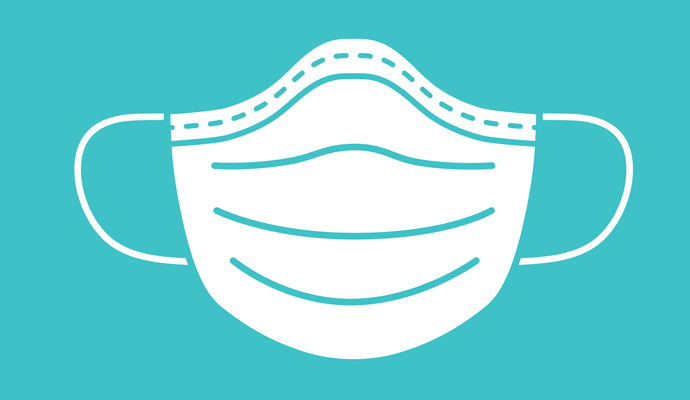Primary Care Practices Overwhelmed by COVID-19, PPE Shortages
85% of primary care practices commenting on a survey are experiencing PPE shortages as COVID-19 continues to significantly impact their practices.

Source: Getty Images
- Providers across the care continuum have been reporting significant personal protective equipment (PEE) shortages, but a new survey shows that primary care practices are being hit hard by supply chain disruptions and other challenges arising from the COVID-19 pandemic.
For more coronavirus updates, visit our resource page, updated twice daily by Xtelligent Healthcare Media.
About 85 percent of primary care practices commenting on a new weekly survey conducted by the Primary Care Collaborative and the Larry A. Green Center reported a lack of access to PPE, which is causing a slow down in COVID-19 testing at their practices.
The first of the weekly surveys gathered responses from 500 primary care clinicians across 48 states. The respondents largely practice family medicine (70 percent), followed by pediatrics (14 percent) and internal medicine (11 percent).
The survey also noted that nearly three-quarters of respondents also worked in a practice with more than three clinicians and primarily came from five states: Virginia, Colorado, California, Pennsylvania and New York, which has been deemed the epicenter of the outbreak in the US.
READ MORE: Documentation to Ease Medical Billing Issues Due to COVID-19
“I cannot get PPE. We have NO masks of any kind,” one respondent stated.
“It is appalling to me that we don't have broader testing capabilities,” replied another. “I had a patient two days ago who absolutely should have been tested. But because she hadn't traveled internationally, or had a known contact with COVID, we couldn't. She was flu negative. It's insane. We know it's here in our area, and we aren't looking for it like we need to be. It's maddening.”
Primary care practices are not the only providers wanting for PPE at this time. A survey released earlier this month by Premier found that 86 percent of health systems are concerned about shortages of PPE, including gowns, gloves, face shields, and face masks.
A follow-up survey involving senior living facilities also found that more than two-thirds of the facilities cannot access PPE need for COVID-19 containment plans, with N95 face masks being the most needed supply.
The majority of PPE – about 80 percent according to Premier – come from Asia where key countries including China, Taiwan, Thailand, India, and South Korea have stopped exporting products through April. Although, the countries could wait longer to resume operations, especially as nations like India implement lockdowns for millions of people in their borders.
READ MORE: Data Analytics Add Value to Healthcare Supply Chain Management
Significant PPE shortages are impacting the testing and treatment of COVID-19 in the US, the survey of primary care practices confirmed.
Nearly half (46 percent) of surveyed practices had no capacity to test patients for the novel coronavirus, the survey found. Additionally, another third (34 percent) said they only had capacity to test based on CDC guidelines and restrictions, which have been criticized for slowing the government’s response to the outbreak.
The survey also found that primary care practices are struggling to effectively manage COVID-19.
In the survey, 21 percent of respondents said the current COVID-19 status had had a “severe impact” on their practice, while 30 percent reported that the strain is “close to severe.” In addition to lacking supplies, the ways in which COVID-19 is negatively impacting practices included being overwhelmed by patients’ virtual questions; limiting routine primary care to address patients at risk for the virus; and clinicians out due to illness or self-quarantine.
To ease the burden on providers, the Department of Defense announced on March 17 that it will make up to 5 million respirator masks available to providers. The White House also put forth an executive order on March 23 to stop the hoarding of key healthcare resources.
READ MORE: How COVID-19 Is Impacting the Healthcare Revenue Cycle
But providers are looking for more action to increase their PPE volumes as more patients present with COVID-19.
Group purchasing organization Vizient recently urged policymakers to take legislative action to alleviate PPE shortages. Suggestions from the organization included requiring retailers like Amazon and Home Depot to redirect sales of PPE to the healthcare system, flying PPE to the US from foreign sites of manufacture, and repurposing available product by redirecting products from veterinary and dental clinics and evaluating if the FDA can extend useful life for expired supplies.
The American Medical Association (AMA) is also advocating for PPE and critical policy and regulatory changes, calling on top officials to launch a “Manhattan Project” type approach to expanding manufacturing capacity and producing the needed supplies.
However, primary care practices are also advocating for better leadership to quell COVID-19 concerns. Over 30 percent of comments from close to half of respondents expressed frustration with failed leadership and confusion from constantly changing or conflicting guidelines, the survey stated.
Congress reportedly reached a bipartisan agreement on a stimulus package earlier this morning. The package is expected to contain key provisions for healthcare providers and PPE.
